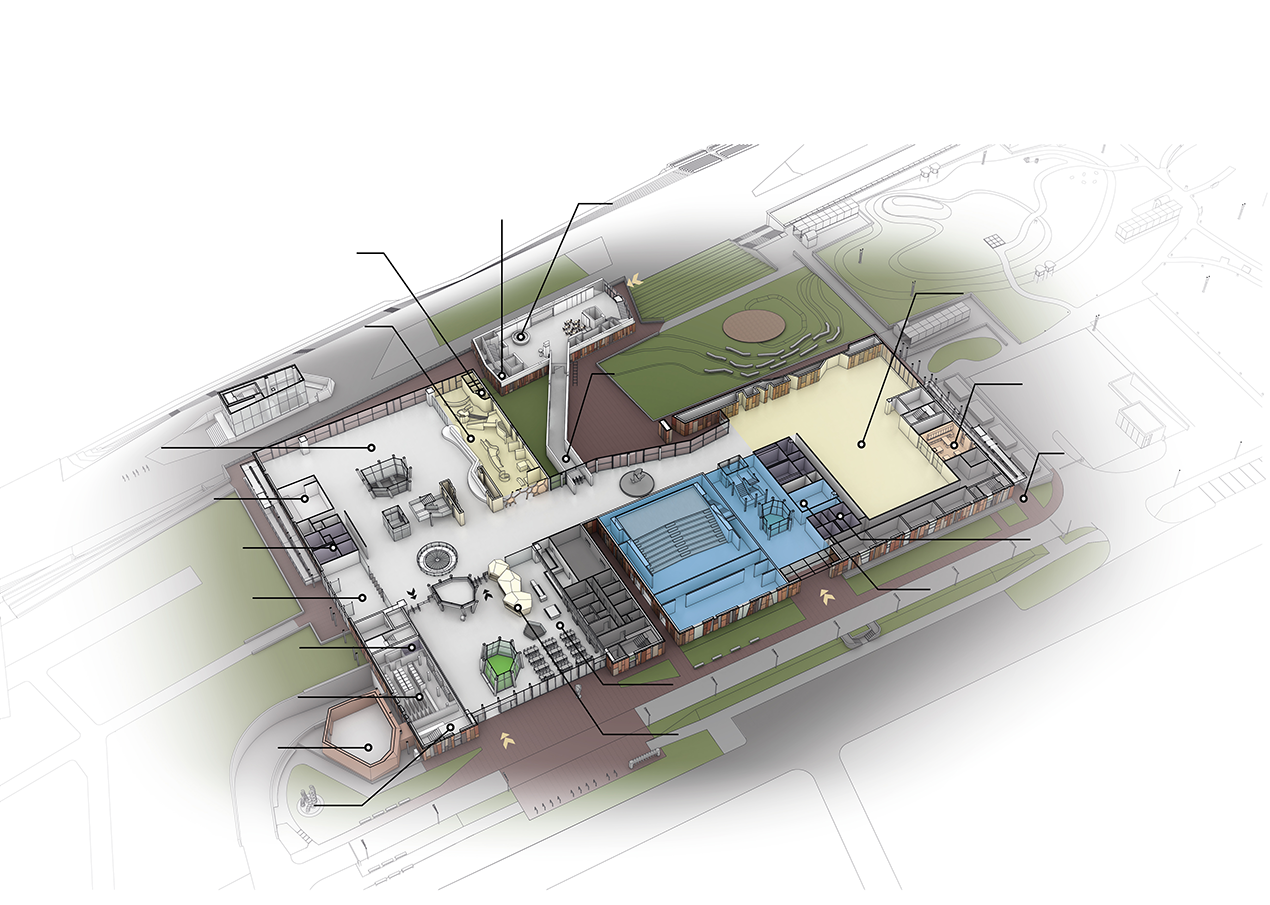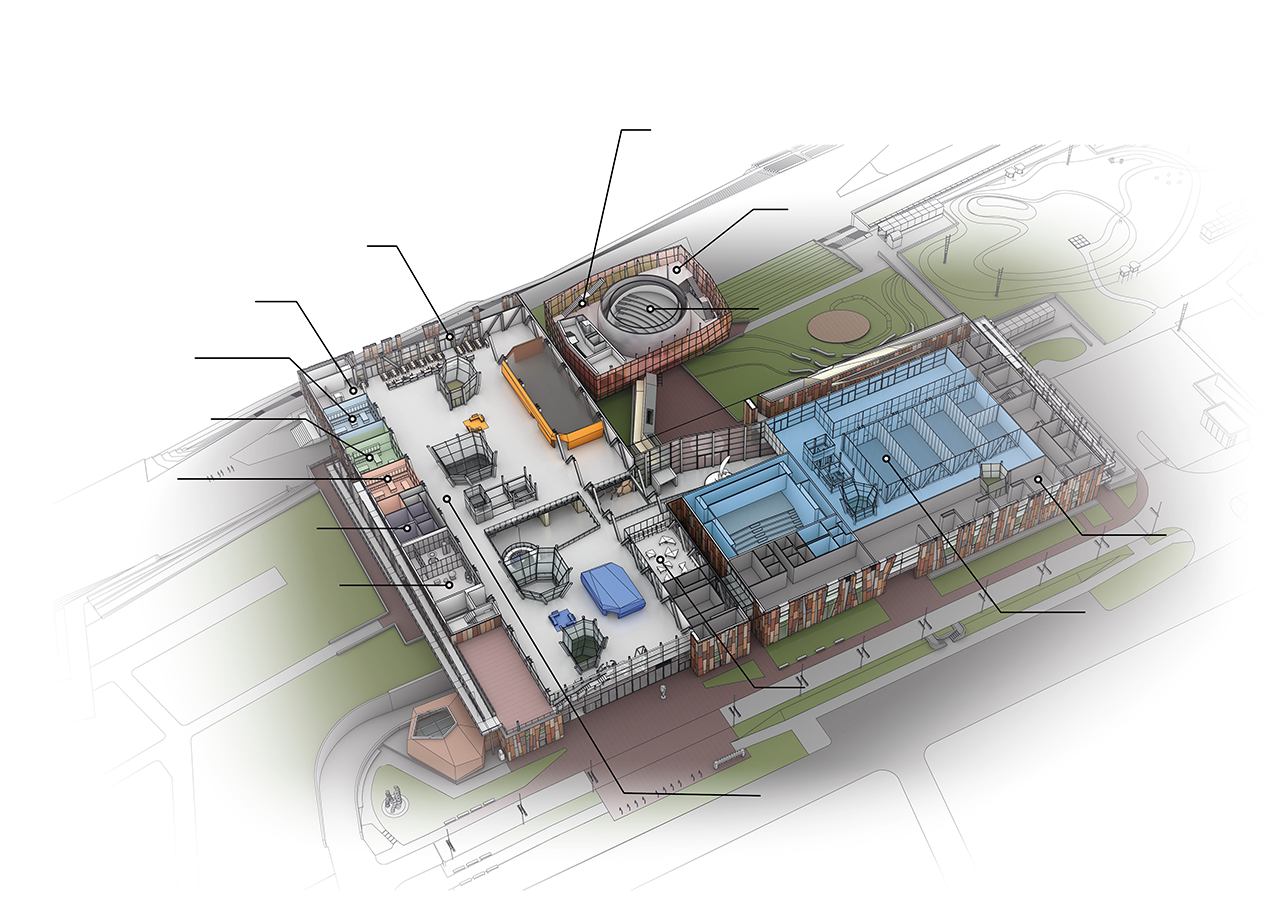“The Future is Now” helps to meet and understand the challenges of the contemporary world in all their complexity. It shows different technological solutions and encourages to look at them in a critical way. It also takes notice of the relationships between our personal values and the values of others.
The exhibition focuses on the nearest future, which most of us will experience. The youngest Visitors of Copernicus will be able to see the end of the 21st century with their own eyes. The future is today. Can anybody doubt that?
Future in Three Stages
The exhibition focuses on the near future that most of us will experience. Visitors to Copernicus will see the end of the 21st century with their own eyes. The future is now. Does anyone still doubt it?
How will the medicine of the future look like? How much can we sacrifice for our bodies' wellbeing? And how much will we have to?
The third part of the exhibition will surround the medicine of the future, human design, and cyborgisation. It will encourage a contemplation on the boundaries of our health and life quality care. Thanks to innovative technical solutions, we can now peek inside the human body in a non-invasive way, examine it with precision, diagnose diseases, and plan treatments. We are one step away from the enticing possibilities of improving ourselves. How far can we go? Should genetic modifications and senses enhancing implants stay confined to cyberpunk literature? What defines us as humans? Among the exhibits, our Visitors will encounter a 3D bioprinter, which prints human tissues, a brain-computer interface, or a biohacker's lab.
“The Future Is Now” exhibition was created under the “Educational-informative campaigns aimed at popularising the benefits of the use of digital technologies” project, which is executed by The Chancellery of the Prime Minister of Poland together with National Research Institute NASK and Copernicus Science Centre. The campaigns are aimed at promoting the use of technologies in everyday life by persons of different ages, breaking the barriers in the field, and increasing the digital competences of our society. The project encompasses five areas: quality of life, public e-services, network security, programming, and a digital future.
How does Artificial Intelligence “think”? Can it be trusted? Where does a computer artist find inspiration?
The first part of the exhibition prompts a rethink of the boundaries of trust, privacy, intimacy, security, and the new definitions of art and creativity. The exhibits are divided into 4 groups, themed:
How will the future Earth look like? Will it remain the same planet? What chances do we have of maintaining comfortable lives?
The second part of the exhibition will focus on our notions of the future world as our habitat. It will address such issues as the ongoing degradation of the natural environment, global warming, cities of the future, or space colonisation.
The exhibits are divided into 3 groups, themed: Climate, Population, Biodiversity.
#CLIMATE #POPULATION #BIODIVERSITY
The exhibit that will integrate all these themes is "Globe" which illustrates the influence of the global processes on the environment. It will allow us to look at the Earth from the cosmic perspective. On the surface of the giant sphere, you will be able to watch changes in CO2 concentration levels and the average temperature, as well as migrations of species.
Furthermore, various spatial and statistical data, obtained in cooperation with UNEP and UNEP/GRID-Warszawa Centre, will be made available. UNEP in the United Nations Environment Programme. The Centre is one of the five GRID facilities in the world, and its goal is to aggregate data on Earth's resources and to increase the public awareness on climate crisis or the protection of biological diversity. The presented data is integrated with „World Environment Situation Room" (WESR) – a platform with data and knowledge regarding the changes happening in the world environment, run by UNEP.
At the exhibition, we will also get to see a possible green transformation for a city of the future and we will expose the omnipresent microplastics on our planet.
“The Future Is Now” exhibition and educational programme were created under the “Educational-informative campaigns aimed at popularising the benefits of the use of digital technologies” project, which is executed by The Chancellery of the Prime Minister of Poland together with National Research Institute NASK and Copernicus Science Centre. The campaigns are aimed at promoting the use of technologies in everyday life by persons of different ages, breaking the barriers in the field, and increasing the digital competences of our society. The project encompasses five areas: quality of life, public e-services, network security, programming, and a digital future.



